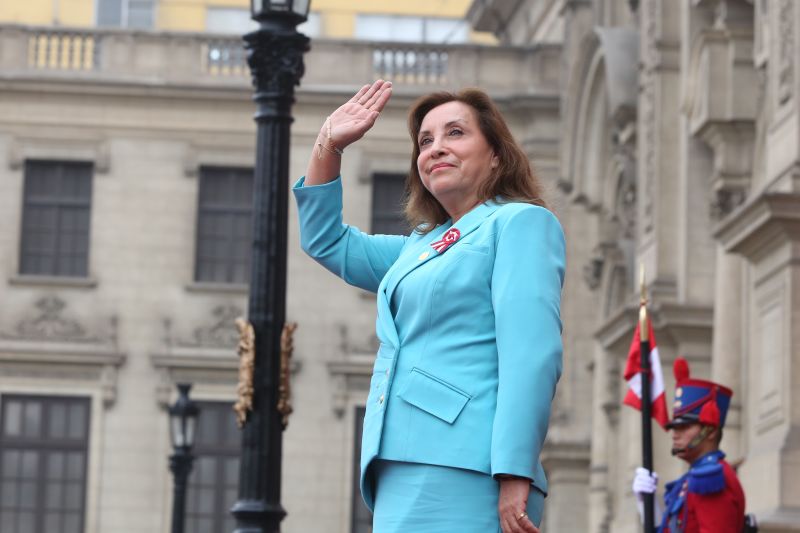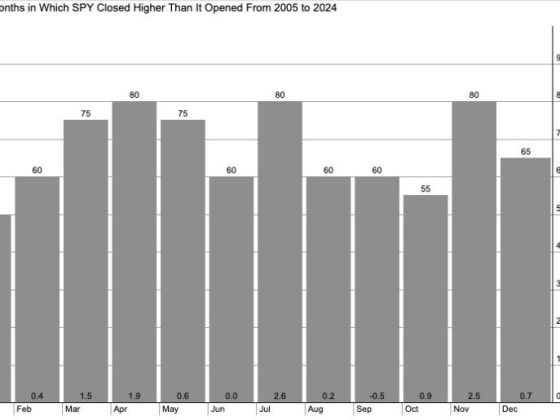Allegations of a secret nose job are threatening Peruvian President Dina Boluarte’s grip on power – and that’s only the tip of her problems.
The Latin American leader, whose popularity has cratered to among the lowest in the world – with a disapproval rating of 93%, according to a recent Datum Internacional poll – is facing a string of investigations at the hands of Peru’s Attorney General.
The most serious of these involve the deaths of more than 60 people during a crackdown by government security forces on the protests that followed the ouster of her predecessor Pedro Castillo in December 2022; the more lurid include allegations she accepted Rolex watches and other jewelry as bribes and transported a fugitive politician in a presidential vehicle.
But it is the plastic surgery on her nose in the summer of 2023 that has currently captured the attention of the country’s headline writers.
Boluarte, who denies all the allegations against her, has been accused of abandoning her post to have the surgery because she did not inform congress or delegate her powers during her almost two-week absence for an operation she has insisted was “essential” for her health, as she was constitutionally required to do.
Last week, the plastic surgeon Mario Cabani cast doubt on that account, telling a local TV show that of the five procedures he carried out on Boluarte – including rhinoplasty, septoplasty, a procedure on the lower eyelids, and a fat graft on the nasolabial folds (smile lines) – all but one were aesthetic procedures.
Cabani, who said he had judicial authorization to disclose the procedures, also claimed Boluarte was sedated and at times unconscious during the procedure – which is at odds with the account of Boluarte, who has likened the procedure to a tooth extraction, and her lawyers who have maintained she never lost consciousness and did not abandon her post.
As if the controversy over Boluarte’s nose were not damaging enough, it follows another controversy over her wrist.
In March 2024, police raided her home (and later the presidential palace) as part of the “Rolexgate” scandal in which she is accused of illicit enrichment and failing to declare her ownership of several luxury watches. Boluarte has insisted the watches were in fact a “loan” that she mistakenly accepted.
It’s a state of affairs that might seem shocking to those not well-versed in Peruvian politics and the well-documented troubles of its leaders in recent decades.
But in this country, presidential scandals – proven or alleged – are so commonplace that one of its prisons has housed four disgraced former leaders.
Call it the curse of the Peruvian presidency: Since the turn of the millennium, no fewer than seven presidents have been brought to trial or faced legal challenges relating to allegations of corruption or human rights abuses. An eighth shot himself dead when police were closing in.
Falling like dominoes into disgrace
Peru’s notorious political instability – Boluarte became the sixth president in just seven years when she took over without an election in 2022 – is often traced back to the presidency of Alberto Fujimori, who was ousted in 2000 following a scandal involving his intelligence chief and convicted on charges of corruption, embezzlement and human rights violations that included authorizing a death squad.
Since then, the political careers of most of Fujimori’s successors have also ended in disgrace.
Alejandro Toledo (2001-2006) the first man to be elected president after Fujimori, was last year sentenced to more than 20 years in prison for receiving millions in bribes from Brazilian construction company Odebrecht, in a scandal that has tainted political elites across Latin America.
Alan García (2006-2011) died from a self-inflicted gunshot wound in 2019, on the day prosecutors and police were due to arrest him as part of an investigation also linked to Odebrecht.
Ollanta Humala (2011-2016) was sentenced this month by a first instance court to 15 years in prison for receiving illicit campaign contributions from Odebrecht and the Venezuelan government.
Pedro Pablo Kuczynski (2016-2018) resigned after two years in power after he too was caught in the grip of the Odebrecht scandal when allegations of money laundering surfaced. Today, he is under house arrest while the trial against him continues.
Martin Vizcarra (2018-2020) dissolved Congress the year after coming to power. He did not finish his term either but was removed by the legislature on grounds of “moral incapacity” after he was accused of taking bribes during his time as governor. He is currently on trial.
Pedro Castillo (2021-2022), a rural teacher and union leader, was relatively unknown when he won an election after a brief period of rule by two interim presidents, one of whom resigned in less than a week. He was taken into custody for the alleged crime of rebellion and dismissed by Congress after attempting to dissolve it and set up an emergency government.
Boluarte, his vice president, took over in 2022.
All those accused and convicted have rejected the accusations against them.
Where did it all go wrong?
Many experts point to Fujimori’s inauguration in 1990 as ushering in a return to authoritarian rule for a country that had spent the whole of the 1970s as a military dictatorship.
The son of Japanese immigrants and the host of a TV show focused on the environment, Fujimori started off democratically, winning election by campaigning for change at a time of economic crisis and defeating a right-wing coalition led by the future Nobel prize-winning author Mario Vargas Llosa.
He also won early plaudits for his “Fujishock” austerity policies that reined in hyperinflation as well as his fight against rebel guerilla groups responsible for tens of thousands of deaths.
Yet an authoritarian streak soon emerged and while abuse of power and corruption allegations began to swirl, he turned to his security forces to repress his opponents.
Within two years of his triumph at the ballot box, Fujimori carried out a “self-coup” in which he closed down Congress and the judiciary, revised the constitution, and installed a dictatorship “that demolished the political parties,” according to constitutionalist lawyer Luciano López.
“(For Fujimori) it was an anti-value to belong to a political party, an anti-value to do politics,” said Anibal Quiroga, dean of the Law and Political Science faculty at Cesar Vallejo University.
Ever since, according to Quiroga, political parties have been “permanently replaced by personalist, populist, improvised movements.”
For the country’s next elections, scheduled for April 2026, there are 43 candidates registered to run for the presidency, dozens of whom are not supported by traditional party structures. As Quiroga puts it, “What Peru produces most after coffee is presidential candidates.”
Congress vs. The President
López points to another legacy of Fujimori as playing into the instability – the revised constitution he brought in after his self-coup, which handed greater powers to Congress.
The problem those revisions made for the presidency did not become clear until 2017, when for the first time the opposition had a majority in Congress and used its powers to topple Kuczynski. Since then it has become harder for presidents to hold on to power.
Amplifying the problem is that the present Congress has amended several articles of the constitution, according to López, increasing the imbalance of power and leaving an “all-powerful” Congress.
López fears this is storing up problems for the future. If a president wins election, but does not have the backing of Congress to govern, what will he or she do, López asks. “I sincerely hope I’m wrong, but we are very exposed to a new April 5, 1992,” he says, referring to the day of Fujimori’s self-coup.
‘Prison of the presidents’
Perhaps there’s no greater symbol of the curse than the Barbadillo prison in Lima, known popularly in Peru as the ‘prison of the presidents,’ that once housed Fujimori and has also held three of the leaders that followed him – Toledo, Castillo and Humala.
But some experts caution against viewing Peru’s struggles with corruption – it is ranked 127th out of 180 in Transparency International’s corruption perception index – only through the lens of its disgraced ex-presidents.
As Quiroga points out, while there have been cases of presidential corruption, there have also been cases of “lawfare,” he says; a “use and abuse of judicial proceedings, or of the legal system in general, for political ends and objectives, often with the aim of eliminating, damaging or delegitimizing an adversary.”
Meanwhile, the former prosecutor and ex-president of Transparency International José Ugaz points out that the list of cursed presidencies may show Peru is “part of a club of countries shamefully plagued by corruption,” but it also shows it is a country “able to bring seven former presidents to justice.”



